Massive Stars In Open Cluster Pismis 24

Massive Stars in Open Cluster Pismis 24
How massive can a normal star be? Estimates made from distance, brightness and standard solar models had given one star in the open cluster Pismis 24 over 200 times the mass of our Sun, making it a record holder. This star is the brightest object located just above the gas front in the above image. Close inspection of images taken recently with the Hubble Space Telescope, however, have shown that Pismis 24-1 derives its brilliant luminosity not from a single star but from three at least. Component stars would still remain near 100 solar masses, making them among the more massive stars currently on record. Toward the bottom of the image, stars are still forming in the associated emission nebula NGC 6357, including several that appear to be breaking out and illuminating a spectacular cocoon.
Credit: NASA, ESA and J. M. Apellániz (IAA, Spain)
More Posts from Xyhor-astronomy and Others

When (Neutron) Stars Collide via NASA http://ift.tt/2hK4fP8





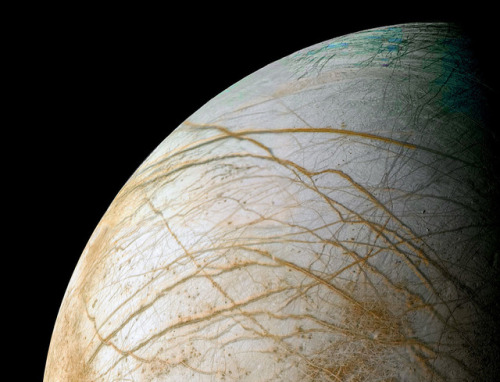
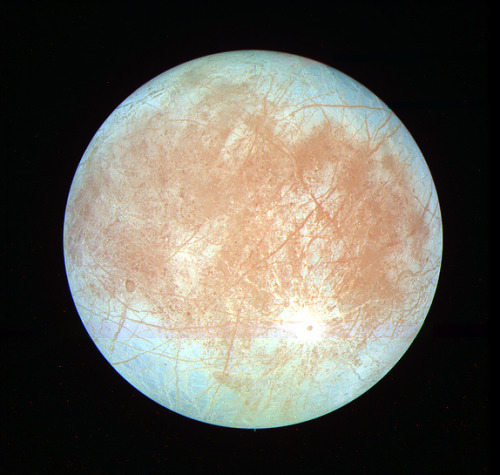


Europa
Jupiter’s moon Europa is slightly smaller than Earth’s moon. Its surface is smooth and bright, consisting of water ice crisscrossed by long, linear fractures. Like our planet, Europa is thought to have an iron core, a rocky mantle and an ocean of salty water beneath its ice crust. Unlike Earth, however, this ocean would be deep enough to extend from the moon’s surface to the top of its rocky mantle. Being far from the sun, the ocean’s surface would be globally frozen over. While evidence for this internal ocean is quite strong, its presence awaits confirmation by a future mission.
Europa orbits Jupiter every 3.5 days and is locked by gravity to Jupiter such that the same hemisphere of the moon always faces the planet. Because Europa’s orbit is slightly stretched out from circular, or elliptical, its distance from Jupiter varies, creating tides that stretch and relax its surface. The tides occur because Jupiter’s gravity is just slightly stronger on the near side of the moon than on the far side, and the magnitude of this difference changes as Europa orbits. Flexing from the tides supplies energy to the moon’s icy shell, creating the linear fractures across its surface. If Europa’s ocean exists, the tides might also create volcanic or hydrothermal activity on the seafloor, supplying nutrients that could make the ocean suitable for living things.

Europa Clipper
NASA’s planned Europa Clipper would conduct detailed reconnaissance of Jupiter’s moon Europa and investigate whether the icy moon could harbor conditions suitable for life.
The mission would place a spacecraft in orbit around Jupiter in order to perform a detailed investigation of the giant planet’s moon Europa – a world that shows strong evidence for an ocean of liquid water beneath its icy crust and which could host conditions favorable for life. The mission would send a highly capable, radiation-tolerant spacecraft into a long, looping orbit around Jupiter to perform repeated close flybys of Europa. NASA has selected nine science instruments for a future mission to Europa. The selected payload includes cameras and spectrometers to produce high-resolution images of Europa’s surface and determine its composition. An ice penetrating radar would determine the thickness of the moon’s icy shell and search for subsurface lakes similar to those beneath Antarctica’s ice sheet. The mission would also carry a magnetometer to measure the strength and direction of the moon’s magnetic field, which would allow scientists to determine the depth and salinity of its ocean.
Image credit: NASA / JPL / Galileo / Voyager & Processed by Kevin M. Gill
Credit: NASA & Europa Clipper Mission

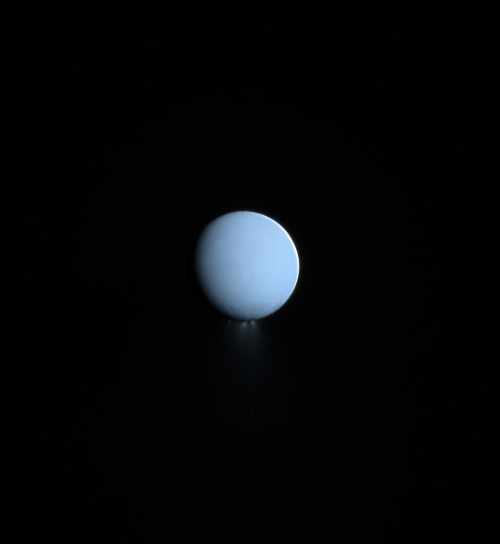



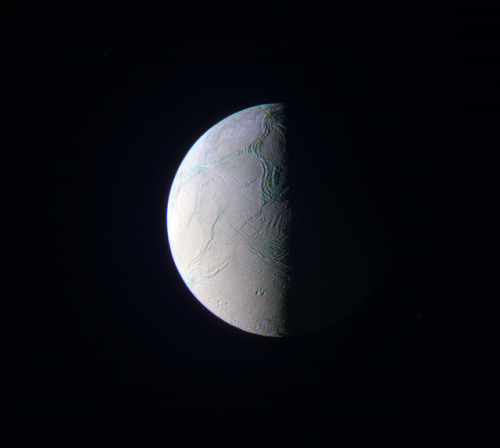

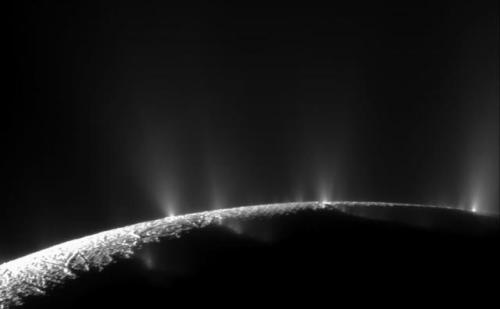

Enceladus
Enceladus is one of the major inner moons of Saturn along with Dione, Tethys, and Mimas. It orbits Saturn at a distance of 148,000 miles (238,000 km), falling between the orbits of Mimas and Tethys. It is tidally locked with Saturn, keeping the same face toward the planet. It completes one orbit every 32.9 hours within the densest part of Saturn’s E Ring, the outermost of its major rings, and is its main source.
Enceladus is, like many moons in the extensive systems of the giant planets, trapped in an orbital resonance. Its resonance with Dione excites its orbital eccentricity, which is damped by tidal forces, tidally heating its interior, and possibly driving the geological activity.
Enceladus is Saturn’s sixth largest moon, only 157 miles (252 km) in mean radius, but it’s one of the most scientifically compelling bodies in our solar system. Hydrothermal vents spew water vapor and ice particles from an underground ocean beneath the icy crust of Enceladus. This plume of material includes organic compounds, volatile gases, carbon dioxide, carbon monoxide, salts and silica.
With its global ocean, unique chemistry and internal heat, Enceladus has become a promising lead in our search for worlds where life could exist.

In 2005, Cassini’s multiple instruments discovered that this icy outpost is gushing water vapor geysers out to a distance of three times the radius of Enceladus. The icy water particles are roughly one ten-thousandth of an inch, or about the width of a human hair. The particles and gas escape the surface at jet speed at approximately 800 miles per hour (400 meters per second). The eruptions appear to be continuous, refreshing the surface and generating an enormous halo of fine ice dust around Enceladus, which supplies material to one of Saturn’s rings, the E-ring.
Several gases, including water vapor, carbon dioxide, methane, perhaps a little ammonia and either carbon monoxide or nitrogen gas make up the gaseous envelope of the plume.
Read more at: solarsystem.nasa.gov
Image credit: NASA/JPL/Cassini & Kevin Gill
The dusty, star-forming galaxy took shape in the first billion years after the Big Bang and is likely to be one of the first galaxies to ever form, says Min Yun, astrophysicist of the University of Massachusetts Amherst.
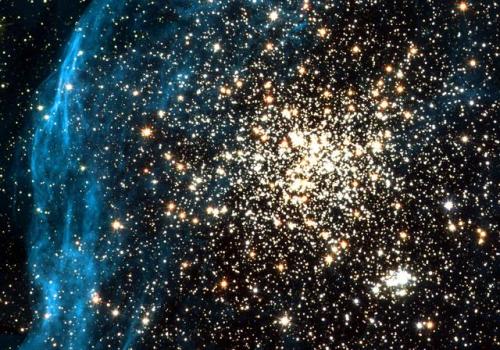
Located in the Large Magellanic Cloud, one of our neighbouring dwarf galaxies, this young globular-like star cluster is surrounded by a pattern of filamentary nebulosity that is thought to have been created during supernova blasts. It consists of a main globular cluster in the centre and a younger, smaller cluster, seen below and to the right, composed of extremely hot, blue stars and fainter, red T-Tauri stars. This wide variety of stars allows a thorough study of star formation processes.
Credit: ESA, NASA and Martino Romaniello (ESO, Germany)
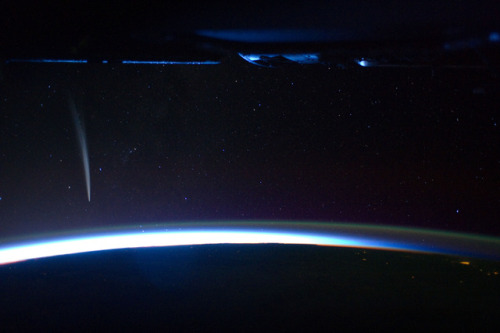
Comet Lovejoy is visible near Earth’s horizon in this nighttime image photographed by NASA astronaut Dan Burbank, Expedition 30 commander, onboard the International Space Station on Dec. 21, 2011.
Image credit: NASA
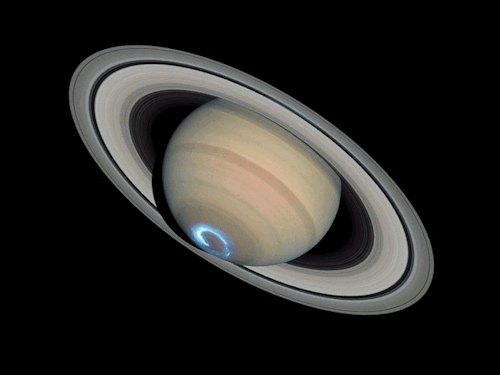
Sequence of images of auroras seen at the south pole of Saturn. Images combine visible and ultraviolet light.
Credit: NASA, ESA, J. Clarke (Boston University, USA), and Z. Levay (STScI)
Why Webb Needs to Chill
Our massive James Webb Space Telescope is currently being tested to make sure it can work perfectly at incredibly cold temperatures when it’s in deep space.
How cold is it getting and why? Here’s the whole scoop…
Webb is a giant infrared space telescope that we are currently building. It was designed to see things that other telescopes, even the amazing Hubble Space Telescope, can’t see.

Webb’s giant 6.5-meter diameter primary mirror is part of what gives it superior vision, and it’s coated in gold to optimize it for seeing infrared light.

Why do we want to see infrared light?
Lots of stuff in space emits infrared light, so being able to observe it gives us another tool for understanding the universe. For example, sometimes dust obscures the light from objects we want to study – but if we can see the heat they are emitting, we can still “see” the objects to study them.
It’s like if you were to stick your arm inside a garbage bag. You might not be able to see your arm with your eyes – but if you had an infrared camera, it could see the heat of your arm right through the cooler plastic bag.

Credit: NASA/IPAC
With a powerful infrared space telescope, we can see stars and planets forming inside clouds of dust and gas.

We can also see the very first stars and galaxies that formed in the early universe. These objects are so far away that…well, we haven’t actually been able to see them yet. Also, their light has been shifted from visible light to infrared because the universe is expanding, and as the distances between the galaxies stretch, the light from them also stretches towards redder wavelengths.
We call this phenomena “redshift.” This means that for us, these objects can be quite dim at visible wavelengths, but bright at infrared ones. With a powerful enough infrared telescope, we can see these never-before-seen objects.

We can also study the atmospheres of planets orbiting other stars. Many of the elements and molecules we want to study in planetary atmospheres have characteristic signatures in the infrared.

Because infrared light comes from objects that are warm, in order to detect the super faint heat signals of things that are really, really far away, the telescope itself has to be very cold. How cold does the telescope have to be? Webb’s operating temperature is under 50K (or -370F/-223 C). As a comparison, water freezes at 273K (or 32 F/0 C).
How do we keep the telescope that cold?
Because there is no atmosphere in space, as long as you can keep something out of the Sun, it will get very cold. So Webb, as a whole, doesn’t need freezers or coolers - instead it has a giant sunshield that keeps it in the shade. (We do have one instrument on Webb that does have a cryocooler because it needs to operate at 7K.)

Also, we have to be careful that no nearby bright things can shine into the telescope – Webb is so sensitive to faint infrared light, that bright light could essentially blind it. The sunshield is able to protect the telescope from the light and heat of the Earth and Moon, as well as the Sun.

Out at what we call the Second Lagrange point, where the telescope will orbit the Sun in line with the Earth, the sunshield is able to always block the light from bright objects like the Earth, Sun and Moon.

How do we make sure it all works in space?
By lots of testing on the ground before we launch it. Every piece of the telescope was designed to work at the cold temperatures it will operate at in space and was tested in simulated space conditions. The mirrors were tested at cryogenic temperatures after every phase of their manufacturing process.

The instruments went through multiple cryogenic tests at our Goddard Space Flight Center in Maryland.

Once the telescope (instruments and optics) was assembled, it even underwent a full end-to-end test in our Johnson Space Center’s giant cryogenic chamber, to ensure the whole system will work perfectly in space.

What’s next for Webb?
It will move to Northrop Grumman where it will be mated to the sunshield, as well as the spacecraft bus, which provides support functions like electrical power, attitude control, thermal control, communications, data handling and propulsion to the spacecraft.

Learn more about the James Webb Space Telescope HERE, or follow the mission on Facebook, Twitter and Instagram.
Make sure to follow us on Tumblr for your regular dose of space: http://nasa.tumblr.com.


Solar ❤
-
 iwannarunaway-13 liked this · 2 weeks ago
iwannarunaway-13 liked this · 2 weeks ago -
 20drawnroses liked this · 3 months ago
20drawnroses liked this · 3 months ago -
 turquoiseorchid reblogged this · 3 months ago
turquoiseorchid reblogged this · 3 months ago -
 darkswamplurker liked this · 4 months ago
darkswamplurker liked this · 4 months ago -
 crispycoffeestudent reblogged this · 4 months ago
crispycoffeestudent reblogged this · 4 months ago -
 6thsensical liked this · 4 months ago
6thsensical liked this · 4 months ago -
 etesienne reblogged this · 4 months ago
etesienne reblogged this · 4 months ago -
 whacknuggets reblogged this · 4 months ago
whacknuggets reblogged this · 4 months ago -
 whacknuggets liked this · 4 months ago
whacknuggets liked this · 4 months ago -
 thetoiletwater liked this · 4 months ago
thetoiletwater liked this · 4 months ago -
 itisthefunpolice reblogged this · 4 months ago
itisthefunpolice reblogged this · 4 months ago -
 corruptinnocent liked this · 4 months ago
corruptinnocent liked this · 4 months ago -
 jaybird1306 reblogged this · 4 months ago
jaybird1306 reblogged this · 4 months ago -
 jaybird1306 liked this · 4 months ago
jaybird1306 liked this · 4 months ago -
 monardammm reblogged this · 4 months ago
monardammm reblogged this · 4 months ago -
 monardammm liked this · 4 months ago
monardammm liked this · 4 months ago -
 danthebookworm reblogged this · 4 months ago
danthebookworm reblogged this · 4 months ago -
 danthebookworm liked this · 4 months ago
danthebookworm liked this · 4 months ago -
 scriggle-scraggle reblogged this · 4 months ago
scriggle-scraggle reblogged this · 4 months ago -
 scriggle-scraggle liked this · 9 months ago
scriggle-scraggle liked this · 9 months ago -
 meissama liked this · 1 year ago
meissama liked this · 1 year ago -
 shannybangbang reblogged this · 1 year ago
shannybangbang reblogged this · 1 year ago -
 demichrising liked this · 1 year ago
demichrising liked this · 1 year ago -
 hjlphotos liked this · 2 years ago
hjlphotos liked this · 2 years ago -
 exhausted-asterism reblogged this · 2 years ago
exhausted-asterism reblogged this · 2 years ago -
 redemoinhopsiquico reblogged this · 2 years ago
redemoinhopsiquico reblogged this · 2 years ago -
 redemoinhopsiquico liked this · 2 years ago
redemoinhopsiquico liked this · 2 years ago -
 palavreado reblogged this · 2 years ago
palavreado reblogged this · 2 years ago -
 palavreado liked this · 2 years ago
palavreado liked this · 2 years ago -
 wearestardustthings reblogged this · 2 years ago
wearestardustthings reblogged this · 2 years ago -
 wolfnew liked this · 3 years ago
wolfnew liked this · 3 years ago -
 artill2 liked this · 4 years ago
artill2 liked this · 4 years ago -
 u-crazy-child liked this · 5 years ago
u-crazy-child liked this · 5 years ago -
 inner-solstice reblogged this · 5 years ago
inner-solstice reblogged this · 5 years ago -
 eventualeden reblogged this · 5 years ago
eventualeden reblogged this · 5 years ago -
 afishtrap reblogged this · 5 years ago
afishtrap reblogged this · 5 years ago -
 thats-so-gabe-babe reblogged this · 5 years ago
thats-so-gabe-babe reblogged this · 5 years ago -
 thats-so-gabe-babe liked this · 5 years ago
thats-so-gabe-babe liked this · 5 years ago -
 petrichor-by-starlight liked this · 5 years ago
petrichor-by-starlight liked this · 5 years ago -
 no-vivimos-de-recuerdos reblogged this · 5 years ago
no-vivimos-de-recuerdos reblogged this · 5 years ago -
 puta-que-soy-yeta reblogged this · 5 years ago
puta-que-soy-yeta reblogged this · 5 years ago -
 nebbytheartist liked this · 5 years ago
nebbytheartist liked this · 5 years ago -
 escapingtheirony liked this · 5 years ago
escapingtheirony liked this · 5 years ago
For more content, Click Here and experience this XYHor in its entirety!Space...the Final Frontier. Let's boldly go where few have gone before with XYHor: Space: Astronomy & Spacefaring: the collection of the latest finds and science behind exploring our solar system, how we'll get there and what we need to be prepared for!
128 posts